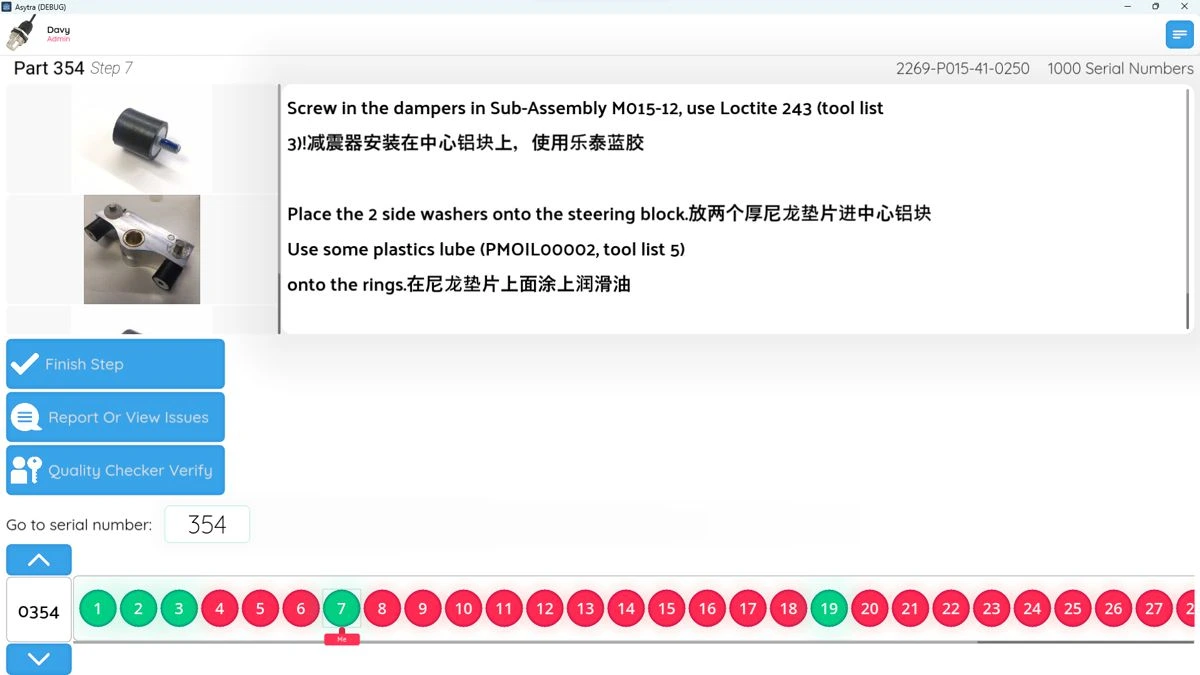In the bustling world of manufacturing, where precision and efficiency reign supreme, ensuring that every product meets quality standards is paramount. From smartphones to automobiles, each item undergoes a complex assembly process involving multiple steps and components. However, with the aid of advanced Software to Enhance Product Assembly Traceability, manufacturers can now streamline this process. Furthermore, they can enhance product traceability, ultimately leading to improved quality control and customer satisfaction.

Tracking Every Step:
Imagine you’re in a factory, overseeing the assembly of a brand-new gadget. With countless tasks to complete, it’s crucial to keep track of every step along the way. This is where specialized software comes into play. more specific, it meticulously registers the start and end time of each assembly step, providing a comprehensive timeline of the entire production process. Whether it’s attaching components, conducting tests, or performing quality checks, every action is carefully recorded.
Operator Accountability:
In addition to tracking time, the software also captures the names of the operators performing each task. This feature enhances accountability and transparency within the manufacturing process. By associating specific tasks with individual operators, manufacturers can identify areas for improvement and provide targeted training where necessary. Moreover, this data can be invaluable in recognizing and rewarding top-performing employees, fostering a culture of excellence and teamwork.
Ensuring Quality:
Quality is non-negotiable in manufacturing. To uphold stringent quality standards, the software to enhance product assembly traceability facilitates the registration of quality checks at various stages of the assembly process. From measuring critical dimensions to conducting functional tests, each quality control step is meticulously documented. Any deviations from established standards trigger immediate alerts, enabling operators to take corrective action promptly. By proactively addressing quality issues, manufacturers can minimize defects and uphold their reputation for delivering top-notch products.
Serial Number Serialization:
One of the most powerful features of the software is its ability to associate values and results with each serial number. Therefore, every product receives a unique serial number, acting as its digital fingerprint. This allows manufacturers to trace the entire lifecycle of a product, from its inception on the assembly line to its final destination. In the event of a quality issue or customer complaint, this traceability feature becomes invaluable. More specific, by analyzing the data associated with a specific serial number, manufacturers can pinpoint the root cause of the problem. In this way it is easier to implement corrective measures swiftly.
The Importance of Traceability:
Traceability is not just about keeping tabs on production processes; it’s about detecting the causes of failures and learning from them. By maintaining a detailed record of every product assembly step, serial number, and operator, manufacturers can trace back a problem to its source with pinpoint accuracy. Whether it’s a faulty component, a deviation from standard procedures, or a training gap, traceability provides valuable insights for continuous improvement.
Driving Continuous Improvement:
Beyond its immediate benefits for quality control and traceability, the software empowers manufacturers to drive continuous improvement across their operations. By analyzing trends and patterns in the data collected, decision-makers can identify areas of inefficiency or recurring issues and implement targeted solutions. This data-driven approach to process optimization ensures that manufacturing operations remain agile and responsive to changing market demands.
Conclusion:
In conclusion, the use of software to register every product assembly step represents a significant advancement in manufacturing technology. To clarify, by capturing critical data points such as time stamps, operator names, quality checks, and serial numbers, this software enhances traceability and quality control in the production process. Moreover, it provides manufacturers with valuable insights for driving continuous improvement and ensuring customer satisfaction. In addition, as the manufacturing landscape continues to evolve, embracing digital solutions for traceability and quality management will be essential for staying ahead of the curve.